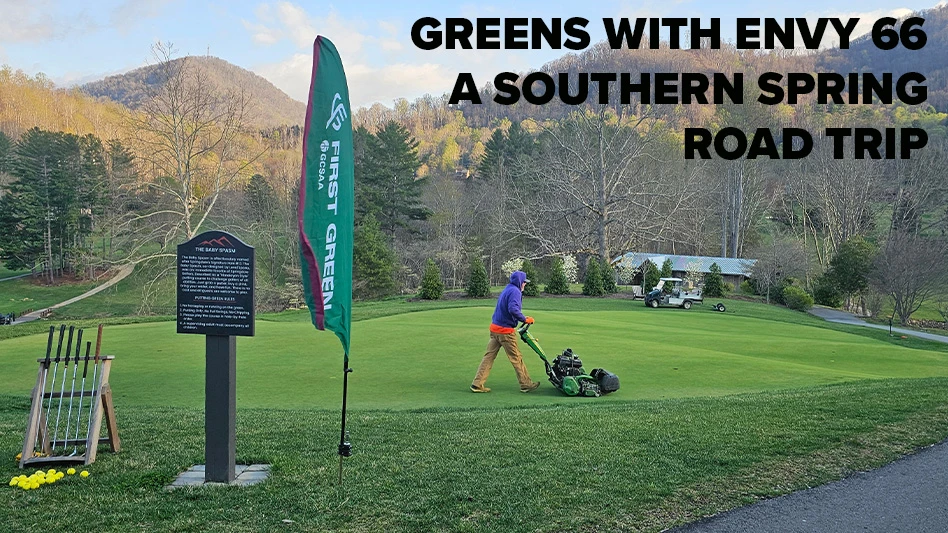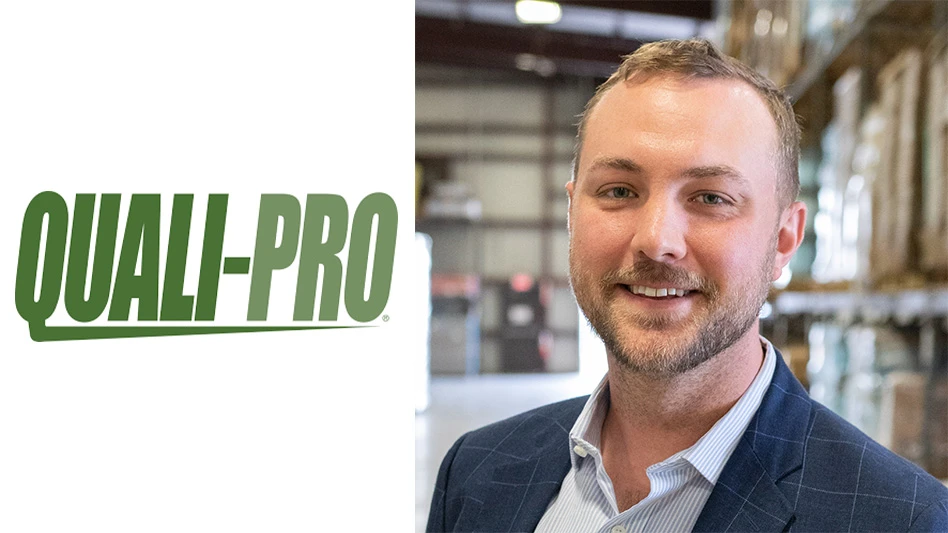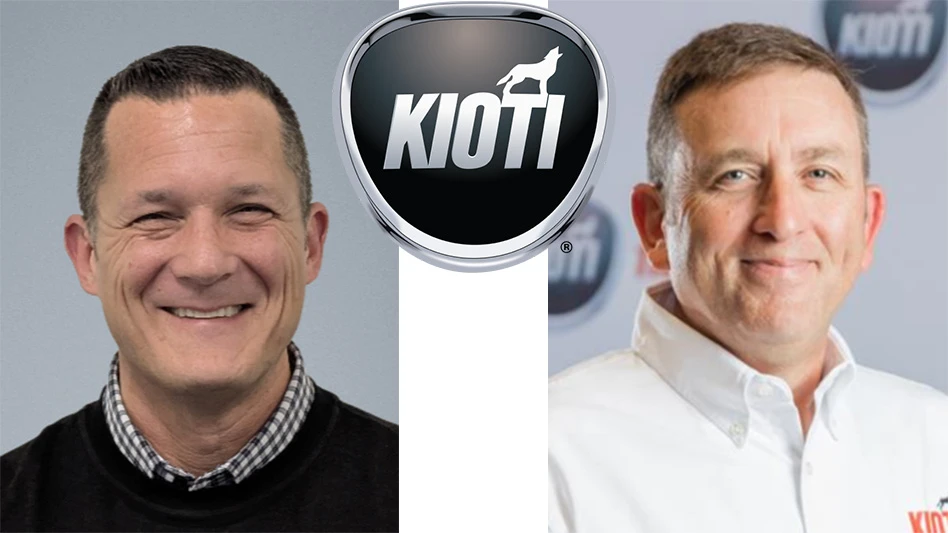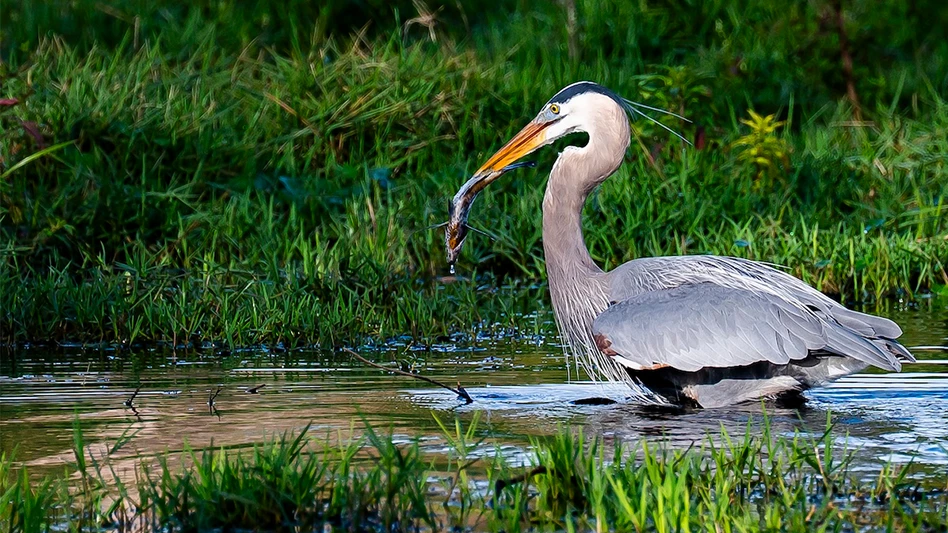“We are not at a sustainable level,” says Doc Grace, owner/operator of Mellomar Golf Park in Lower Marlboro, Md.
A very family-friendly facility consisting of a par-3 nine, regulation nine, and driving range, Mellomar relies heavily on golf-rewarded volunteers to keep his operation running smoothly.
“If it wasn’t for that, we’d be trying to find something else to do,” says Grace. “I had to cut out my fall fertilization this year, as well as my pre-emergent program this past spring.
“I’ll never do that again,” he says, lamenting his bumper crop of crabgrass.
Customers come expecting to get reduced prices for golf and a cart, yet still expect pristine conditions, Grace says.
“The seniors always want a break because they’re on a fixed income, and my comeback response now is, ‘If this keeps up, I’ll be on no income,’” he adds. “I think what will help is for the superintendent to become more involved with the golfers more proactive as to what is going on with the maintenance of their course. Maybe a weekly bulletin or something that can help educate the customers a little as to why things are the way they are.”
At the other end of the spectrum, Bob Fretwell, PGA Club Professional at Old South Country Club, a private club in Lothian, Md., sounds cautiously more optimistic. “You have to maintain the membership you have,” says Fretwell, “while at the same time offer more creative pricing structures to try and attract new members.” Creativity, he admits, that goes so far to include holding dues off altogether for a year or two.
“Right now play is not off, but you’ve got to cut your expenses 10 percent to keep up financially.”
On the maintenance side, Old South superintendent Marlin Ewing says, “Sure, things have slowed down a bit and there have been budget cuts. If there is one thing positive that can be said about the downturn in the economy, it is creating efficiency from necessity. The state of the industry now has made us crack down and be mindful of what we’re spending and when we spend it.
“For example, we have targeted reductions in areas that impact the membership as little as possible. This year we cut out our (bentgrass) fairway topdressing program and chose not to spend the budgeted $5,000-per-month equipment finance/lease allocation and repair the equipment we own. As far as labor goes, our in-season summer staff was hired based more on need than on promising guys a 40-hour work week. A bigger seasonal staff in the mornings before play allowed us to get more work accomplished, freeing up the full-timers to handle the handwatering duties in the afternoon,” Ewing says.
“Taking advantage of early order programs, using generic chemicals when possible, all helps to chip away at the bottom line and ease the strain on your budget.”
For some, sustainability can be simply a business matter, where revenue exceeds expenditures. For others, like myself, sustainable golf is an intricate triangular weave of golf and the environment, golfer expectation and sound golf business practices to maintain revenues.”
Michigan-based Golf Course Consultant Tom Mead, a 36-year veteran of the golf business and who is represented by Resort and Golf Marketing, Bloomfield Hills, Mich., has seen this “bust” building up for some time.
“Private clubs in Michigan are going out of business and many decision-makers are uncomfortable because they are now having to make crucial decisions that have long-term ramifications. What really needs to happen is there has to be a significant shift in values, standards and practices among golf clubs in order to stay open. I’m not talking about minor adjustments to the current business model. A new, sustainable business model based on dwindling natural resources and less disposable income for golf will help to assure short- and long-term financial success.
“What many courses are doing now to stay viable can’t sustain them long term,” he says. “For facilities to offer value-added things like a free boxed lunch at the turn or even free golf, hoping to survive on the cart revenue, may help solve short-term problems for certain facilities, but does little to improve their long-term financial viability.”
Mead has been at the forefront of sustainable golf since his first project with architect Tom Doak, High Pointe Golf Club near Traverse City, Mich. Mead says, “Our goal was to create a course that was affordable, low input and walkable. As the saying goes, ‘In order for golf to grow, it needs to be for everyone.’ Like a lot of daily fee courses built during the boom, the green fees were never truly affordable for mom and dad and the two kids to all spend the day playing together.” Sadly, High Pointe closed in 2009.
The point? “I think there’s a better chance for long-term financial success if we get off the treadmill of trying to meet golfers’ expectations by continually increasing maintenance intensity and budgets, and figure out how to make money respecting the real intent and spirit of the game while protecting the planet’s vital resources. Plenty of superintendents can see the need for some sort of transition, and they have the ability to develop a sustainable maintenance program. The problem is that they do not have the time or ability by themselves to educate their boards and members, or owners and paying golfers, about what they are doing and why.
“To remain profitable the game needs to evolve back to its origin, more connected to the natural world and local community. A new business model must address the fundamental problem of the business. We must reduce inputs. Especially water. We need to do this for financial reasons we need to do this for environmental reasons. Everyone in the business must make an extra effort to educate the paying golfer on the real intent and true spirit of the game and why it’s important to preserve and protect our natural resources,” says Mead.
Andy Sheehan, CGCS, now a sales representative for Davisson Golf, has seen the sustainability issue come to the fore throughout his territory in the mid-Atlantic. “What I’m seeing now,” Sheehan says, “is people are once again having to prepare ‘real’ budgets which, in a way, is good. It’s forcing them to be smarter superintendents.
“Guys will order, say, 14 bags of fertilizer for a greens application,” Sheehan says, “because that has always been the number of bags it took to fertilize their greens. They don’t take into account the area of their greens, calibration of their spreaders, or the fertilizer analysis it’s just ‘what we’ve always done.’ Sales is no longer about being a good pitch man. You have to help out and be a consultant. I’ve helped lots of guys calibrate their spreaders and sprayers and they end up saving in the long run because they can more accurately determine their needs and stay within budgets.”
Nothing wrong with that, Andy. GCI
Jim Black is a freelance writer based in St. Leonard, Md.
Guest column: Time for change
Golf courses have long been perceived as environmental wastelands that use high amounts of chemicals and too much water. We all know these intensively managed areas have slowly begun to integrate organic and sustainable management practices. Although this topic is very highly publicized, actual changes in practices are sluggish. Maybe golf is such a traditional game that even its managers are afraid of change? If we want golf to thrive in the future we need to change the way we do things so the game is able to sustain itself.
For the game of golf to endure the rigors of the social, economic and environmental demands, attention must be given to specific areas of golf course management. According to the Environmental Institute for Golf this includes water management, integrated plant management, wildlife/habitat management, energy/waste management, and golf course siting, design and construction. As a course manager, improving in all five areas is a daunting task, not to mention the money and time consumed. With man hours being decreased, budgets being slashed and unprecedented environmental conditions present, it can, at times seem impossible. Like any new skill, we need to crawl before we walk and walk before we run and not dive head first into the two foot kiddie pool. Here are some simple steps towards making your facility more sustainable.
New generation, new ideas
As a new breed of young, up-and-coming turf managers, we bring a new train of thought to the industry. Challenge yourself to seek changes from the ordinary by thinking outside the box.
Learn principles of habitat/wildlife management
Golf course managers are generally not well-educated in habitat/wildlife management. This can be attributed to the unique differences between golf course and habitat/wildlife management. Golf course managers want things perfect immediately and habitat/wildlife managers understand this process takes time and has a lower threshold for perfection. Furthermore, courses tend to strive for uniform monocultures, whereas habitat/wildlife management seeks polyculture and diversity. Learning, but more importantly, understanding the basic principles of habitat/wildlife management will make our jobs easier.
Also, understanding the environment we are in can help us in becoming better golf course managers. We can look at things holistically and manage systems as a whole, instead of independently. Nature is a system in which things are always in relative balance and changing one thing may cause harm elsewhere if proper care is not taken.
Spread the good word
If the general public was asked what they though about golf courses, the majority would define them as resource hogs and heavy chemical users. We need to encourage communication of the positive aspects of golf courses, such as providing wildlife habitat, as well as serving as water treatment systems that can not only catch runoff, but also reduce the amount of pollutants that reach groundwater sources. We need to spread this message.
Be accessible to the community. Many non-golfers have valid concerns about golf courses and how they are managed. Educate and explain to people what you are doing and why you are doing it. Do things the right way, especially when no one is watching. Also, handle criticism effectively and take advice with an open mind.
Most importantly, share your information with your peers whether success or failure. Your local GCSAA chapter can be a great outlet for this. We are all in this together.
Every little bit counts
In today’s rebuilding economy, it’s difficult to justify improvements towards sustainability. Budgets are being slashed and golfers are still expecting comparable or even improved playing conditions. This seems impossible, but with the right action plan the mission can be accomplished.
Prioritizing is important. Choosing areas for improvement need to be thought out, justified and hopefully cost effective. Projects can be as small as installing compact fluorescent lamps at your facility or as large as an irrigation system overhaul.
There are also federal and state funds available for habitat/wildlife management, especially if there is a species of concern at your facility. These funds are highly sought after but may be a way to move towards sustainability with spending little or no funds.
We owe it to ourselves and to the future of golf to do our very best to ensure the long-term vitality of the game.
Seril Shimizu, M.S., is assistant golf course superintendent at Makalei Golf Club, Kailua-Kona, Hawaii.

Explore the February 2011 Issue
Check out more from this issue and find your next story to read.
Latest from Golf Course Industry
- From the publisher’s pen: Technology diffusion and turf
- Applications open for 2025 Syngenta Business Institute
- Smart Greens Episode 1: Welcome to the digital agronomy era
- PBI-Gordon promotes Jeff Marvin
- USGA investing $1 million into Western Pennsylvania public golf
- KemperSports taps new strategy EVP
- Audubon International marks Earth Day in growth mode
- Editor’s notebook: Do your part





